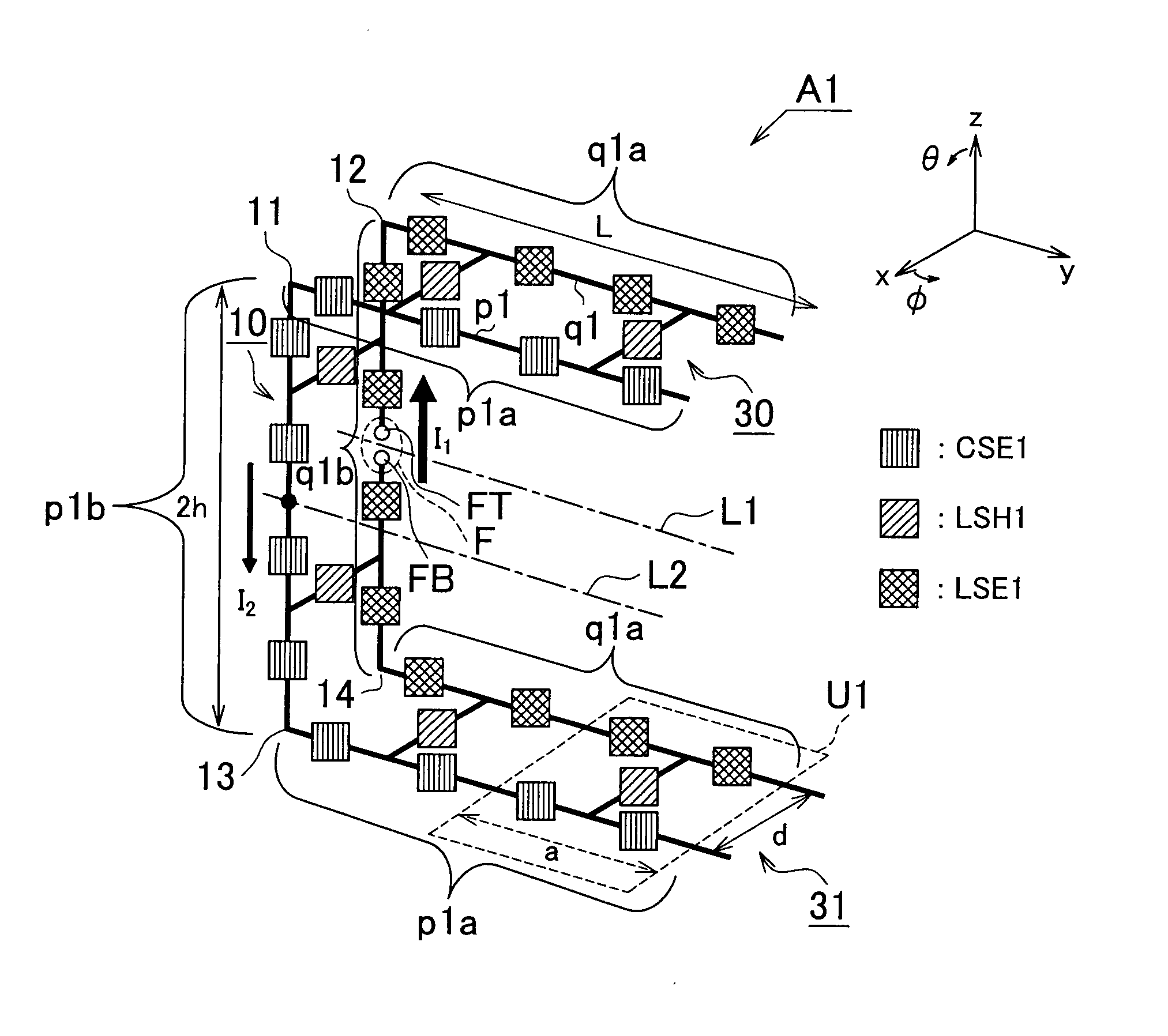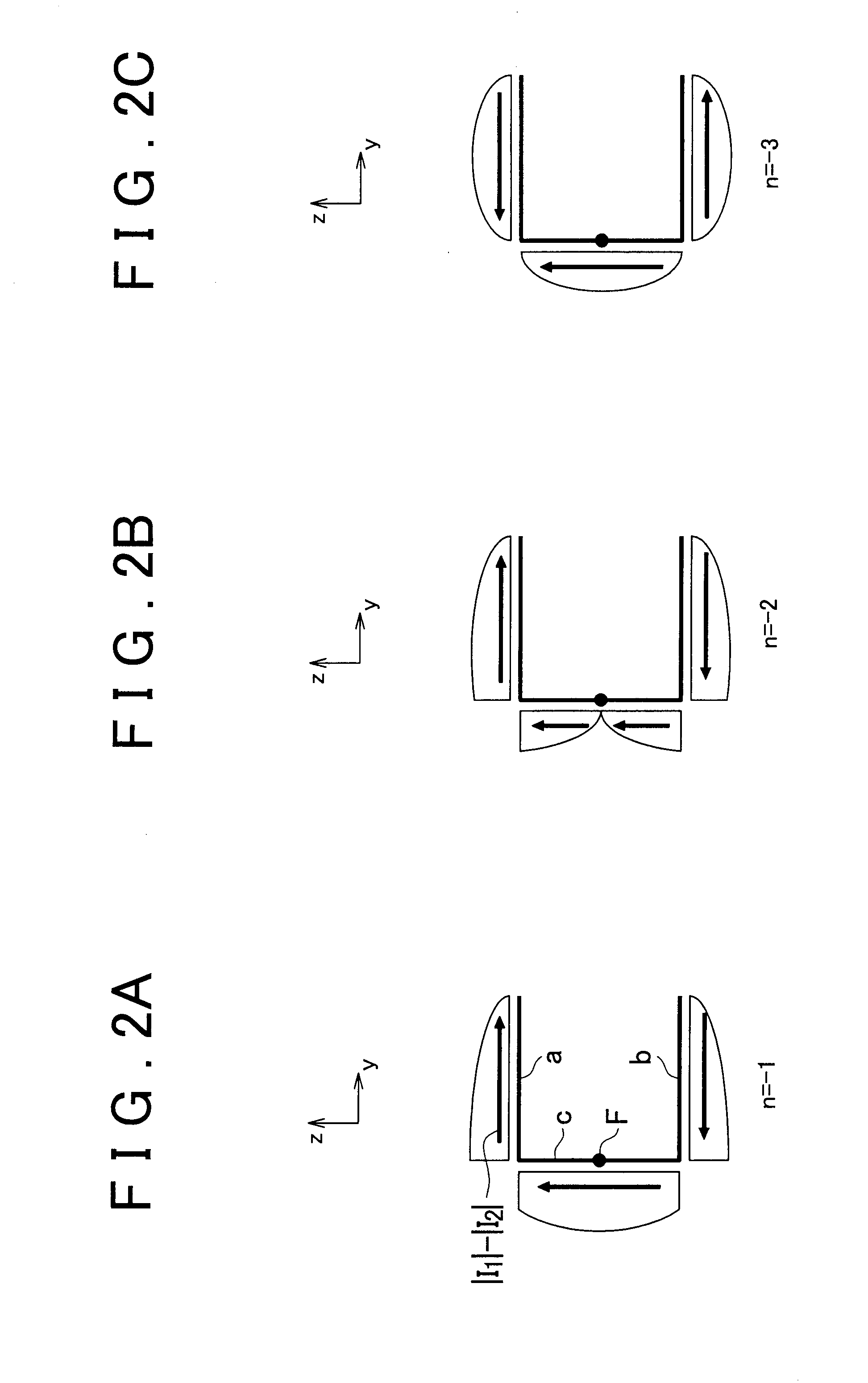Multiple-resonance antenna
a multi-resonance antenna and antenna technology, applied in the direction of antennas, antenna feed intermediates, basic electric elements, etc., can solve the problem that right-handed antennas cannot be used for the above-mentioned applications, and achieve the effect of easy subjecting to impedance matching
- Summary
- Abstract
- Description
- Claims
- Application Information
AI Technical Summary
Benefits of technology
Problems solved by technology
Method used
Image
Examples
first embodiment
[0057]FIG. 1 is a perspective view of a dipole antenna A1 in accordance with the invention. The dipole antenna A1 is composed of two parallel metal wires p1, q1 as its basic structure, and six unit circuits U1 of length (the dimension in the direction parallel to the metal wires p1, q1) a and width (the gap between the metal wires p1, q1) d connected in the longitudinal direction of the metal wires p1, q1.
[0058]The unit circuits U1 are each composed of two capacitors CSE1, as an example of the first capacitor of the present invention, connected in series on a part of the metal wire p1, two inductors LSE1, as an example of the second inductor of the present invention, connected in series on a part of the metal wire q1, and a tie portion that ties the metal wires p1 and q1 via an inductor LSH1, as an example of the second inductor of the present invention. The inductors LSE1 are provided to adjust the two resonance frequencies and the impedance.
[0059]The dipole antenna A1 has a base p...
second embodiment
[0068]FIG. 6 is a plan view of a dipole antenna A2 in accordance with the present invention. The dipole antenna A2 has, as its basic structure, two parallel metal wires p2, q2 which are disposed in an x-y plane. The dipole antenna A2 has a base portion 20 extending in the polarization direction of radiation waves from the metal wires p2, q2 (y-axis direction), and extended portions 40, 41 provided in the plane in which the base portion 20 is disposed and formed to be bent at an angle of 90 degrees with respect to the base portion 20. A feed point F constituted of points FT, FB is provided at the middle of the base portion 2 of the metal wire q2. The metal wire q2 has the same shape as the metal wire q1. That is, the metal wire q2 has a shape with two bent portions (21, 23) at an angle of 90 degrees (squared U-shape) so as to be symmetric with respect to a symmetry axis L3 passing through the feed point F and extending perpendicularly to the y-axis. The metal wire p2 is disposed on t...
third embodiment
[0074]In the present invention, the dipole antenna A1 is formed using a multilayer printed circuit board. That is, as shown in FIG. 10, the dipole antenna A1 may be formed by forming the metal wire p1 and the capacitors CSE1 on the front surface of a substrate 10 with thickness d, the metal wire q1 and the inductors LSE1 on the back surface of the substrate 10, and the inductors LSH1 in through holes 11.
PUM
 Login to View More
Login to View More Abstract
Description
Claims
Application Information
 Login to View More
Login to View More - R&D
- Intellectual Property
- Life Sciences
- Materials
- Tech Scout
- Unparalleled Data Quality
- Higher Quality Content
- 60% Fewer Hallucinations
Browse by: Latest US Patents, China's latest patents, Technical Efficacy Thesaurus, Application Domain, Technology Topic, Popular Technical Reports.
© 2025 PatSnap. All rights reserved.Legal|Privacy policy|Modern Slavery Act Transparency Statement|Sitemap|About US| Contact US: help@patsnap.com



